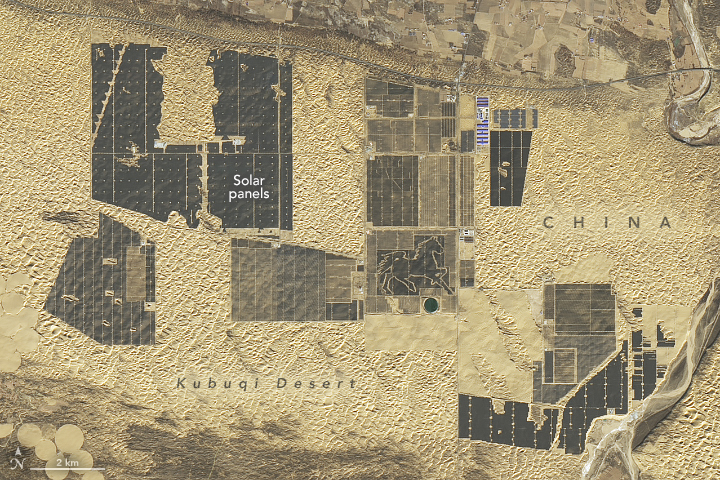Image: Michala Garrison, NASA
NASA has published a new series of photos of the Great Solar Wall, a giant cluster of PV energy projects in the Kubuqi Desert in Inner Mongolia.
“The Kubuqi Desert in Inner Mongolia, sandy and largely devoid of life, once had the reputation of being a ‘sea of death’. More recently, the dune fields have become a sea of photovoltaic potential, transformed by a wave of newly installed solar panels,” NASA said in a statement. “The construction is part of China’s multi-year plan to build a large solar energy wall. designed to generate enough energy to power Beijing.”
The US Space Agency published an image of the desert area before the solar panels were installed in 2017, along with two images showing the current deployment. China daily reported that the region had approximately 5.4 GW of installed solar capacity at the end of August 2024.
Current operating capacity includes a 2 GW facility developed by state-owned China Three Gorges, the largest plant visible in the images. State Power Investment Corp. meanwhile built the 300 MW horse-shaped Junma Solar Power Station, which is also clearly visible in the images.
The site is expected to reach a capacity of 100 GW by 2030, with an area of approximately 400 km and an average width of 5 km.
“The Kubuqi’s sunny weather, flat terrain and proximity to industrial centers make it a desirable location for solar energy generation,” NASA said. “Panels are being installed in a long, narrow strip of dunes just south of the Yellow River, between the cities of Baotou and Bayannur.”
This content is copyrighted and may not be reused. If you would like to collaborate with us and reuse some of our content, please contact: editors@pv-magazine.com.
Popular content






